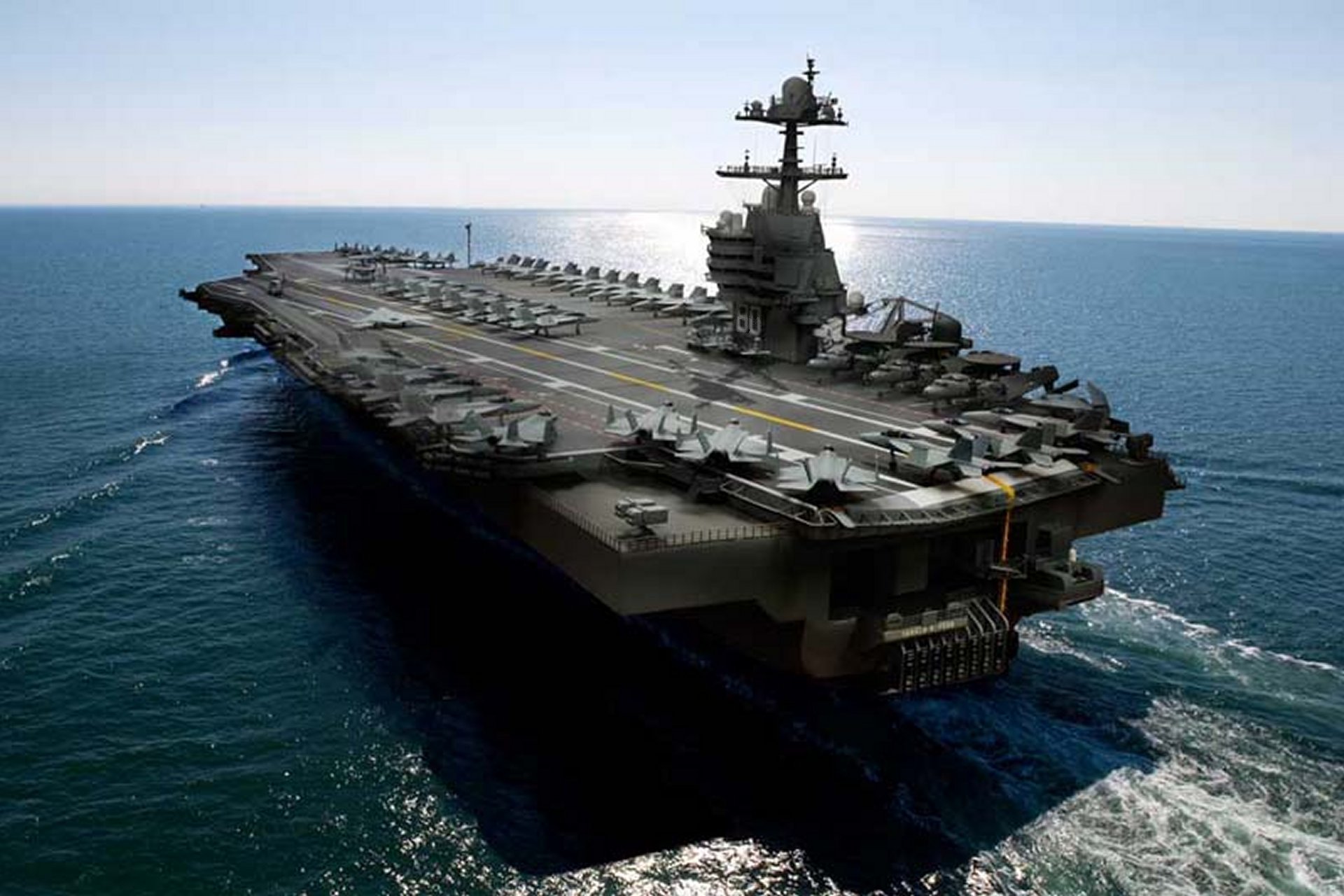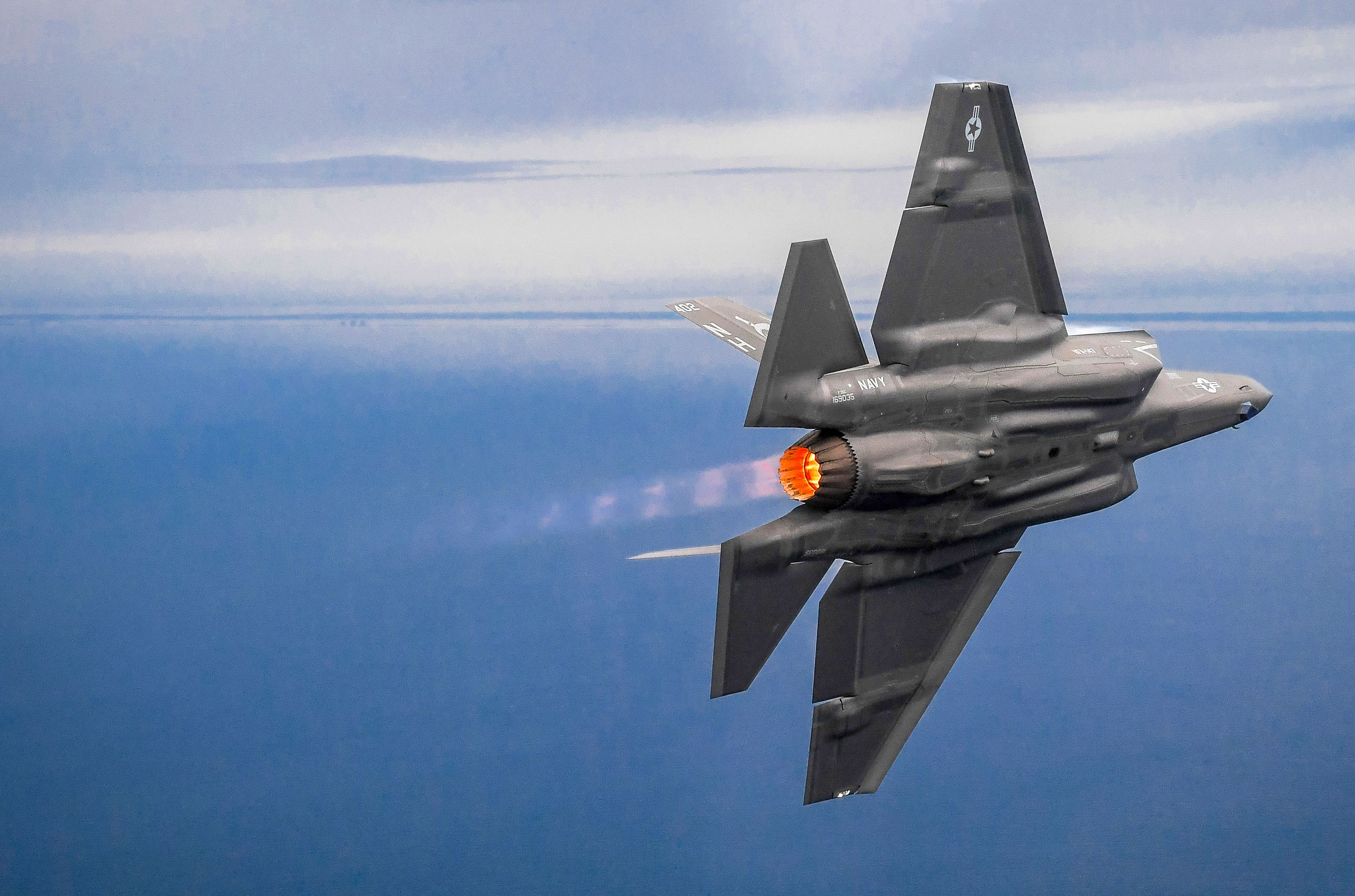
CAPITOL HILL – The Navy’s newest aircraft carriers are being delivered without the capability to deploy with the service’s most advanced fighters, a situation lawmakers call unacceptable.
The House Armed Services seapower and projection forces subcommittee included in its Fiscal Year 2020 National Defense Authorization Act mark language a prohibition for the Navy to accept delivery of its next Ford-class carrier, John F. Kennedy (CVN-79), unless the carrier can deploy with F-35C Lighting II Joint Strike Fighters, a committee staff member said during a media briefing Monday. The carrier is expected to be christened by the end of 2019.
Cost caps imposed by Congress on the Ford-class program to keep the price of these ships from escalating have accomplished the opposite effect, with the Navy accepting delivery of unfinished carriers and intending to pay more money later on to add critical capabilities in the future, the committee staff member said.

“CVN-79 will not be able to deploy with F-35s when it’s delivered to the Navy as a direct result of that cost cap. So when that cost cap was imposed, the Navy traded that capability off and chose to build that back in on the back end,” the committee staffer said. “That’s unacceptable to our members that the newest carriers can’t deploy with the newest aircraft.”
Making the carriers able to deploy with F-35s was just one example of work deferred until after delivery, the staffer said. Some capabilities are installed during post-shakedown availability (PSA), in a growing trend that is among the reasons Ford‘s PSA is running several months over schedule. Other capabilities are delayed until regularly scheduled maintenance availabilities even later in the ship’s life.
Last week, the Navy’s top weapons buyer conceded USS Gerald R. Ford (CVN-78) would not have all of its advanced weapons elevators working when the ship leaves its PSA in October. Currently, only two of 11 weapons elevators work properly, and when the ship leaves the yard in the fall it will depart with only some elevators working, Navy acquisition chief James Geurts told reporters last week.
“We are working right now with the fleet on what elevators do we need to have complete so they can exercise all the function in October, and for any of that work that isn’t done, how we’re going to feather that work in over time,” Geurts said last week.
By delaying work on ships to satisfy spending caps, seapower subcommittee members are concerned the Navy is causing the overall price of these capital ships to increase dramatically. Any cost savings gleaned from production efficiencies are lost when capabilities are added in later, the committee staff member said.

The committee mark recommends repealing the carrier cost caps. The next two carriers, CVN-80 and CVN-81, are being purchased two-carrier buy that’s a fixed-price contract, so a cost cap isn’t needed anyway. The cost cap for Gerald R. Ford was adjusted a few times but ended up being $12.8 billion. John F. Kennedy’s cost cap is $11 billion, according to committee staff members.
The subcommittee is also seeking to wring out savings from the Navy’s amphibious transport dock program by authorizing the purchase an LPD-17 Flight II ship in FY 2020. The LPDs cost about $1.8 billion each.
The Navy purchased its first LPD-17 Flight II ship, LPD-30, in FY 2018 and received $350 million in advance procurement funding last year to purchase LPD-31, with the idea the ship would be bought during FY 2020. However, the White House FY 2020 budget request did not include the remainder of the funding for the LPD in FY 2020, asking instead to buy an LPD in FY 2021 and another LPD in 2023. Navy leadership said the acquisition of LPD-31 was being deferred a year to make room in the shipbuilding budget for an additional attack submarine, which was deemed to be of greater need to the fleet.
The seapower subcommittee mark authorizes the Navy to purchase LPD-31 and the additional attack submarine in FY 2020, the committee staff member said.





